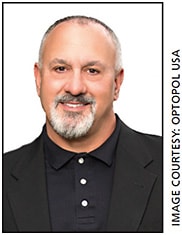Industry Insider is a timely chat with an ophthalmic industry thought leader.
Bob Padula was approached by Optopol Technology to head its new U.S. subsidiary, Optopol USA, which began business at the start of 2020. Poland-based Optopol Technology has been manufacturing automated perimeters since 2001. Mr. Padula has 30-plus years of experience in automated perimetry and OCT. Most of those years were spent with Carl Zeiss Meditec in sales, supporting and marketing the Humphrey Field Analyzer in many parts of the world.
Ophthalmology Management: Tell us about Optopol’s two newest perimeters, the PTS 2000 and PTS 925Wi.
Bob Padula: The PTS 2000 is our “top of the line” model, a full field projection perimeter capable of features such as changing spot size and color, one-minute glaucoma screenings and a 24-2 threshold test. The threshold tests are performed with our Zeta algorithm, which helps speed up the tests by predicting outcomes.
In comparison, the PTS 925Wi is a small desktop bowl perimeter that is a first-in-its- class “hybrid” perimeter — it can be used in both a darkened “visual field environment” room as well as a lighted work-up area. The PTS 925Wi is also capable of peripheral testing, instead of being restricted to a 30° visual field test like many other perimeters. This is helpful, for instance, in the case of ptosis testing for droopy lid, so you can examine the superior area of the eye.
While the PTS 2000 projection perimeter is the first choice for many ophthalmologists, the PTS 925Wi is popular for screening or for a smaller satellite office. The results are comparable and they both run the same software, which makes it an easy transition between them.
OM: What goals do you have for Optopol USA?
BP: Our short-term goal is to educate eye-care professionals about Optopol’s perimeters and why they are a valuable alternative to market leaders; we’re able to include all the same features but at a low price point as we have a low overhead cost. Another draw is we use a lot of newer technology, including the use of Windows 10 operating systems in our perimeters. Our products also use an external “mini-PC” to house the software, which makes it easy to swap out without needing to replace an entire perimeter.
Long-term, Optopol USA is planning to bring the REVO OCT line to the United States. It is one of the best-selling OCT lines in the world and is pending FDA approval.
OM: What changes, if any, do you think the pandemic will bring to the field of diagnostics?
BP: I think you’ll see a bigger emphasis on products that can be quickly and easily cleaned with materials such as Clorox wipes. An example would be perimeters — for ours, you can easily clean the bowl using wipes, but other manufacturers prohibit the use of cleaning products due to the materials used to make the device.
Another change I think we’ll see is proximity to the patient. For many perimeters, you need to be about a foot away from the patient’s face to operate the device. I think we’ll be moving in the direction of remote operation of these devices, especially with the rising usage of telehealth. Our perimeters fit into this model; because of their external PC, the touch screen commands can be operated from an entirely different room.
OM: You have a 40-year history with ophthalmic diagnostic equipment. How does that experience help you at Optopol USA?
BP: At Optopol, the two biggest products are perimetry and OCT. I was with Zeiss for a long time and those are their two biggest products, too, so I was able to learn from a market leader.
Optopol reminded me of companies I worked for earlier in my career in that it’s a smaller company and can be more personal and nimble. For instance, our customers told us how much they wanted a perimeter that could examine the superior area of the visual field so they could do ptosis testing. Within a month of getting that feedback, we incorporated that feature in the PTS 925Wi and included it in the final release. OM









